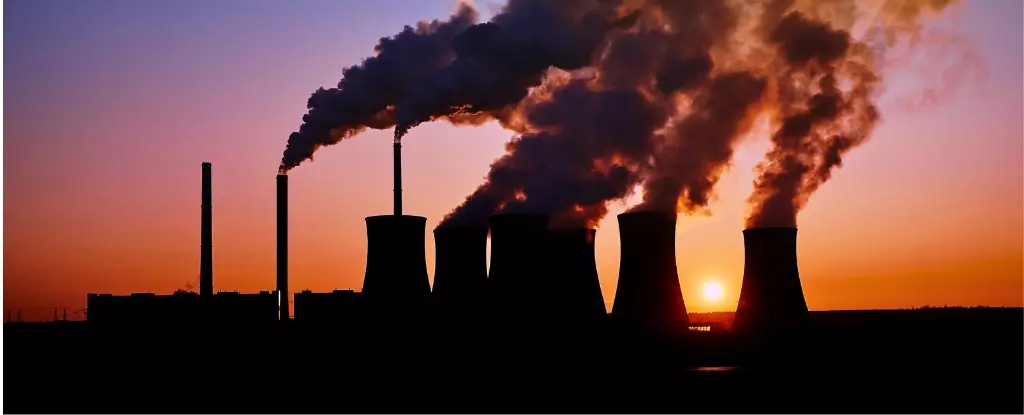Recent studies indicate that our planet has alarmingly crossed the 1.5°C global warming threshold, a milestone that could catalyze severe disruptions in Earth’s climate systems. The benchmark, established under the Paris Agreement of 2015, aims to cap global temperature increases at no more than 1.5°C above pre-industrial averages to avert catastrophic consequences. However, preliminary data from 2024 suggests average temperatures have surged to roughly 1.6°C over the baseline set in the late 19th century. This escalation crystalizes the reality that we stand on the brink of irreversible climate shifts, challenging both ecological integrity and human existence.
Historically speaking, temperatures represent year-to-year variability rather than static figures, implying that a single year’s spike does not constitute a breach of the Paris Agreement. However, the findings from two separate studies conducted by international researchers signal a worrisome trend: they indicate that the record heat of 2024 may indicate the onset of a prolonged warming period. This trajectory raises alarms not only for climate scientists but the global community as a whole, calling into question the feasibility of achieving long-term climate goals set forth in international pacts.
Understanding the Data: A Dual Perspective
The studies in question, while independently conducted by researchers based in Europe and Canada, arrived at similar conclusions through distinct methodologies. The European study focused on long-term historical warming trends, suggesting that once the Earth’s average temperature crosses certain thresholds, subsequent decades are likely to experience similar levels of warming. On the contrary, the Canadian research analyzed month-to-month temperature fluctuations and found that the continuous breach of the 1.5°C limit for a full year is an alarming indicator of long-term climatic degradation.
These findings accentuate the urgency of the situation. The patterns discerned by the researchers strongly imply that once the global temperature exceeds the 1.5°C threshold, we may be locked into a series of subsequent warming periods that could drastically alter ecosystems and human livelihoods if not aggressively countered.
Despite decades of research warning against the perils tied to fossil fuel consumption, humanity’s greenhouse gas emissions have continued unabated, even escalating in recent years. This trajectory has led to a staggering 50% increase in annual carbon dioxide emissions since the Intergovernmental Panel on Climate Change’s (IPCC) inaugural report in 1990. If the studies’ findings prove accurate, immediate and far-reaching measures must be implemented to curtail emissions.
Achieving net-zero emissions—a scenario where the emissions produced are equivalent to those removed from the atmosphere—stands as an essential but daunting challenge. Even if these conditions are met, certain climatic regions, particularly oceans, are set to continue warming, exacerbating the myriad issues stemming from climate instability. A shift toward “net-negative emissions,” in which we extract more greenhouse gases than we release, is paramount yet presents formidable obstacles.
The adverse effects of climate change are already manifesting globally, from intensified wildfires to extreme weather events, overpowering unfamiliar patterns in natural systems. Regions like Australia have witnessed a 1.5°C rise on average since 1910, significantly impacting unique habitats and pushing ecosystems to their breaking points. As bushfires rage and sea levels rise, communities grapple with the ripple effects on their economies, societies, and habitats.
Yet, amidst this daunting narrative, there is a glimmer of hope. The global shift toward renewable energy sources is gaining momentum; many nations are reporting declines in fossil fuel use. Technological advancements are emerging to mitigate emissions in pivotal sectors, such as construction and aviation. However, despite these encouraging signs, the road ahead requires extraordinary effort, foresight, and collaboration on an unprecedented scale.
A Unified Approach: The Need for Global Solidarity
The findings from recent studies serve as stark reminders of our collective shortcomings in addressing climate change. As the data continues to display troubling trends, rich nations must step up to aid developing countries which are disproportionately affected by climate disasters. Adequate support and equitable resource distribution can catalyze transformative changes, enabling all societies to adapt effectively to future climate conditions.
The path forward is clear: we must act collectively, transforming our economies and societies. Enhanced commitment, coordination, and resource allocation are vital to turning the tide against climate change. With unity and renewed vigor, there remains a chance to stave off the grim predictions haunting humanity and ensure a viable future for generations to come. Failing to act decisively and immediately could further exacerbate prevailing issues, sealing our fate as the custodians of a fragile planet.


Leave a Reply